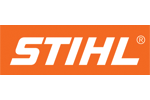Hydro-Gear Service Kits

Hydro-Gear’s Transaxle Oil Service Kits contain everything you need to optimize the performance and extend the life of your machine's transaxles. With oil formulated from high-quality base stocks combined with modern performance additives, you can expect your Hydro-Gear drive systems to continue to perform under a wide variety of demanding operating conditions. Hydro-Gear offers two different kits.
TRANSAXLE OIL SERVICE KIT(PART NO. 72881) ZT-4400 THRU ZT-5400 TRANSAXLES.
THIS KIT INCLUDES:...
$199.99
TRANSAXLE OIL SERVICE KITZT-2800 THRU ZT-3800 TRANSAXLES.
THIS KIT INCLUDES:
5 Quarts of Genuine...
$104.99
1 – 2 products of 2


























Connect with us